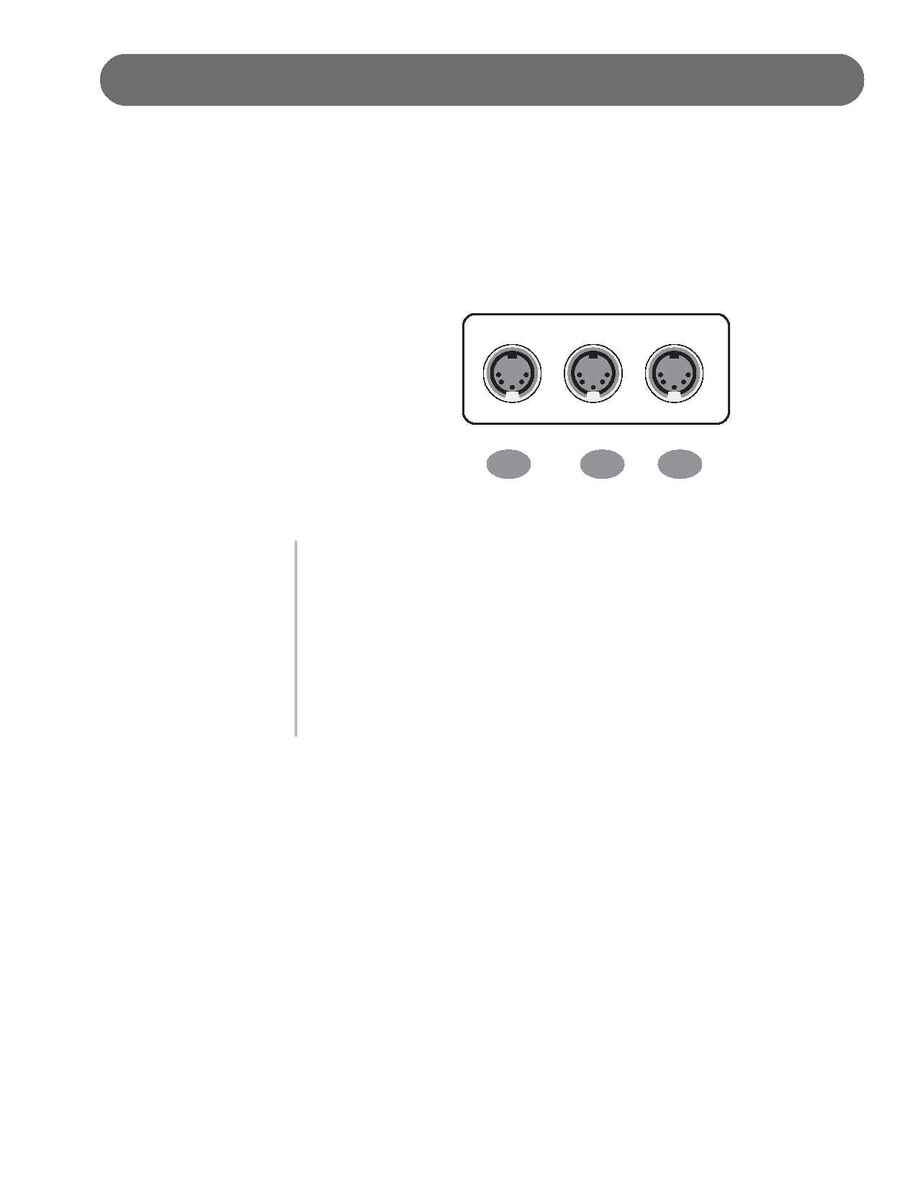Suzuki hp 97 instruction manual Page 33

33
MIDI stands for Musical Instrument Digital Interface. This is a world wide
standard communication interface that enables electronic musical instruments
and computers (of all brands) to communicate with each other so that instruc-
tions and other data can pass between them. This exchange of information
makes it possible to create a system of MIDI instruments and devices that offers
far greater versatility and control than is available with isolated instruments.
Whether you interface with computers, sequencers, expanders or other key-
boards your musical horizons will be greatly enhanced. For further information
on MIDI and MIDI equipment that is available, please contact your local Suzuki
music store.
MIDI CONNECTION - The MIDI terminals are located on the left side panel of the piano.
1.
MIDI In: This terminal receives MIDI data from an external MIDI device.
2.
MIDI Out: This terminal transmits data from this instrument to other MIDI
devices. The transmitted data includes the note and touch velocity produced
while playing on the keyboard, as well as voice changes, wheel operation, and
recorded playback for the melody tracks. Demo songs and auto accompaniment
are not transmitted.
3.
MIDI Thru - This terminal transfers data from the IN terminal directly to other
MIDI devices.
For more information regarding transmitted MIDI data please see the
next page and or the MIDI implementation chart.
MIDI CHANNELS - The MIDI system in this unit has 16 channels numbered from
1-16. Each of the channels is responsible for a voice. When the instrument
receives from an external device, the active channel is determined by the control
message. The transmission channels on this keyboard are fixed as follows:
Channel 1: Master voice
Channel 2: Layer voice
Channel 3: Split voice
Please see the MIDI Implementation Chart for more detail.
For further MIDI setup options please see your local Suzuki Music Store.
M I D I
M I D I
THRU
OUT
IN
1
2
3
